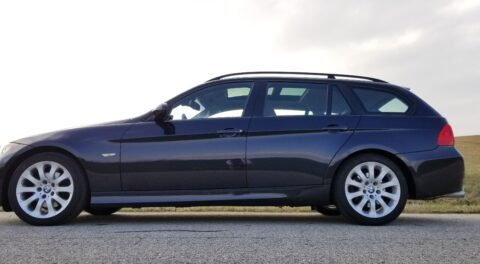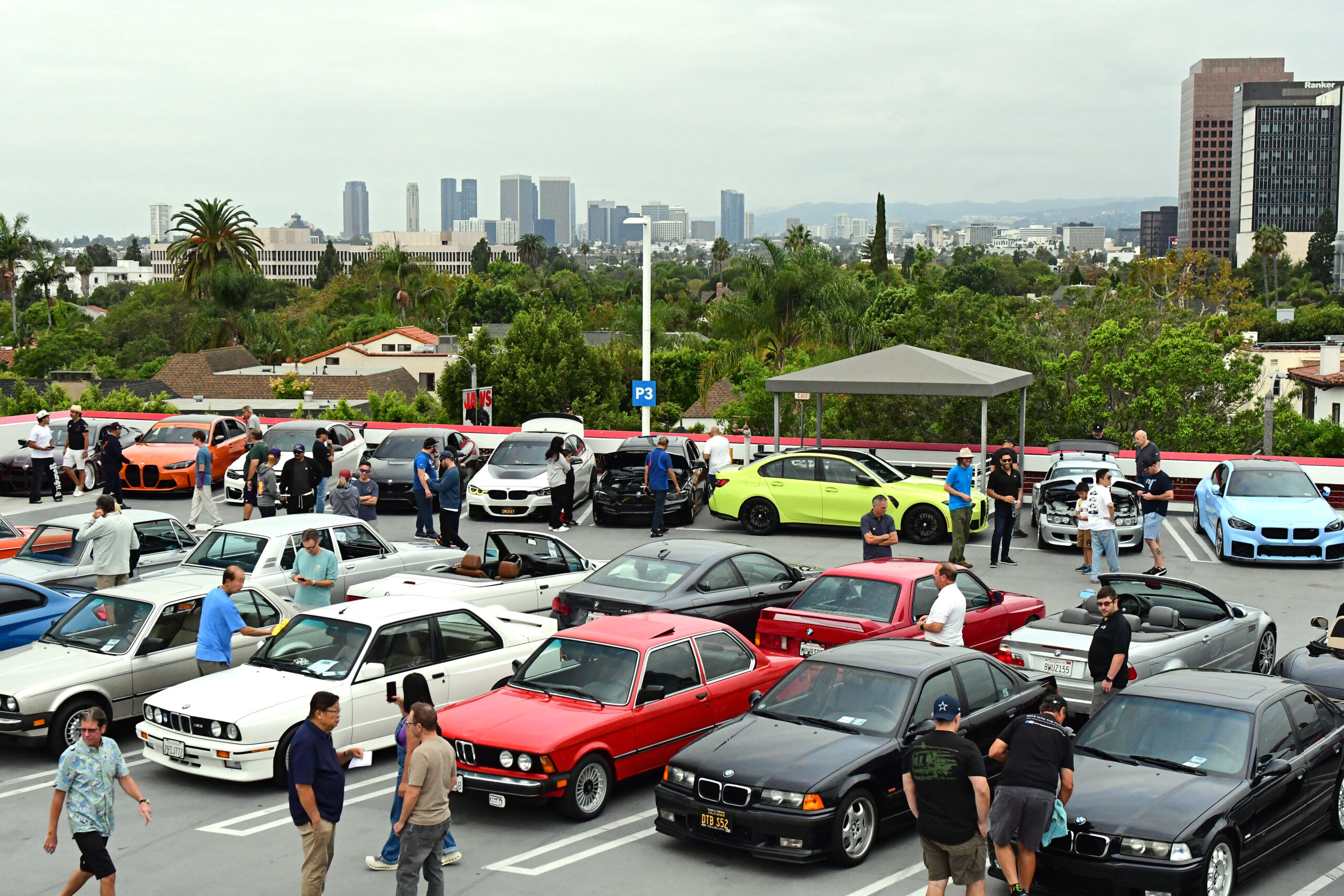Last week, I outlined what I was looking for in a replacement for the 2008 Chevy Silverado Duramax diesel dually, the work truck from my geophysics career that I bought for a song from my former employer, de-moused, owned for a few years, and sold this past September for a windfall profit. In it, I explained that my needs were modest—I’m not looking for another tow monster that could haul a fully-laden 32-foot work trailer like the work truck used to, or tow a big RV travel trailer, or rip a septic tank out of the ground at idle. And the kids are grown, so I don’t need or want something with an entertainment system and rear-facing screens in it. Really, all it need a truck to do is 1) occasionally tow a rented U-Haul auto transporter with a 3 Series-sized car on it, 2) be around in the driveway in case I want to move something that won’t fit in one of the daily drivers, 3) have 4WD or AWD since neither of the dailys do, 4) be something that my wife Maire Anne will feel comfortable driving if she’s, say, heading up to Vermont for a quilting retreat in the winter, and 5) be cheap enough that I can afford to buy and keep this vehicle that, really, I don’t even need. IS THAT TOO MUCH TO ASK?!?
As I said last week, I settled on looking at mid to large-sized Japanese SUVs. My logic here was that I don’t really need or want a pickup; given that a certain size and weight are needed for tow capacity, I’d rather have that bulk apportioned to the interior than open to the elements. The Japanese part, well… I’ve owned six Suburbans (and the Silverado diesel), I know what they are, and forgive me if I simply want to eat at a different restaurant. I appreciate the suggestions folks made about an X5 or a Cayenne or a Touareg, and have little doubt that they’d be more fun to drive, but I’m keenly aware that any German V8 in my $4,000 target price range would be a project car, and the idea is for this vehicle to the polar opposite of that—for it to basically sit in the driveway with the battery disconnected until I need to use it. Plus, those rigs aren’t really that big inside for the stuff-carrying part.
I looked at online ads for Nissan Armadas, but there are some troubling repair-history issues, so I began focusing on Toyota Sequoias. The first-generation 2000 to 2007 XK40 chassis vehicles aren’t Suburban-big, but they’re certainly not small, and their frequency-of-repair rating is excellent, except for the glaring issue of frame rust so bad that Toyota had a recall (the same issue as the Tundra trucks). In 2005, the V8 got a 40-hp plus-up, so the ones to look for appeared to be the 2005 to 2007. In 2008, the Sequoia was redesigned to use the Tundra’s new XK60 platform, but this bulked-up design is close to the size of a Suburban and carries a hefty price tag even as a fifteen-year-old 200,000-mile vehicle.
So, I did what I do—I pored over Facebook Marketplace for 2005 to 2007 Sequoias in my price range that have had the frame replaced by Toyota, don’t have other plainly-visible body rot, without end-of-lifetime mileage on them, and within a reasonable driving distance of me in Boston.
Basically, there weren’t any. I had to loosen up one or more of my search parameters. I tried searching further out. I read an ad for a 120,000-mile 2005 with a “repaired undercoated frame” in upstate NY. It was about two grand above my target price, but the mileage certainly was appealing, and the three-hour drive each way wasn’t out of the question. However, a few messages between me and the seller didn’t inspire confidence.
Then, last Thursday evening, another 2005 popped up. Fortunately this one was under an hour away, and priced at $4,000. The ad showed a pretty ocean-blue Sequoia with 227,000 miles whose frame had been replaced by Toyota under the recall. It was at a hole-in-the-wall used car lot in Worcester. I messaged the seller for the VIN so I could run a CarFax, and it came up clean, with two owners (though, unfortunately, New England owners) and no accidents. I asked him about other body rust and he gave a vague “Yeah, it’s got some.” But you never know until you look, this one was in budget and within easy striking distance, so Friday morning I shook off the “you’re too slow old man” malaise that’s underpinned my last few missed purchases, drove to the bank, took out four grand in cash, and shot out to Worcester. To paraphrase Bogart at the end of The Big Sleep, everything’s different when you get there first.
When I arrived, the vehicle looked pretty sitting in the parking lot. I knew that, if I bought it and parked it in our driveway, Maire Anne would immediately say “ooooh, I like the color,” and I don’t mean that pejoratively. I liked the color. The Sequoia looked whole and intact—its vibe was more “Looking good, Mrs. Wheeler” than “What’s a girl like you doing in a place like this?”

Promising, right?
The dealer gave me the keys and left me alone, bless his heart. I donned my Tyvek suit and walked around the car.
The first thing I saw was that the rear bumper cover was slightly askew. When I grabbed it and wiggled it, it was loose. No big deal, and certainly reflected in the price, but it made me wonder what had been done to the body.
I did the crouch-level walk-around, and was more than a bit taken aback by what looked like drywall screws holding on the back of the left running board, with a gap between it and the rocker panel behind it large enough to see rust blisters.

Yeesh!
When I crawled under the car, I could see Mrs. Wheeler without her makeup—that the metal that the running board was screwed into clearly wore its 210,000 New England miles on it. This wasn’t terribly surprising—it would’ve been surprising had the undercarriage not shown the mileage.

Okay, so not technically drywall screws, but still…
But the more I looked, the more I could see that while the frame itself had been replaced, there was the expected amount of rust on the body panels and suspension components. The worst of it appeared to be this hole in the right-side rocker panel.

This was on the side without the funky attachment screws.
And then there was the muffler that was just swayin’ in the breeze, connected to nothing.

Sequoia wind chimes?
One could argue that the vehicle wasn’t really that rusty, and that all of this was inside the envelope of the $4,000 asking price. There’s also the argument that this was the first Tacoma I’d looked at, so I should see what there was to see about the model in general, not just this specific example. I listened to those arguments and opened up one of the doors, and was greeted by a trashed interior with duct tape on the seats and the scent of cannabis strong enough to attract a skunk. I instantly realized that even if I wanted the Sequoia to occasionally tow, the idea that Maire Anne, she of the exquisitely sensitive nose, would drive it instead of her Honda Fit just went out the window.
Really, there was just one more thing to sus out—to get a sense of the interior space of the vehicle. Granted, I’m still spoiled by the experience of owning Suburbans, where, when you lift up the rear hatch, even with the 3rd seat up, there’s enough room back there for six kegs, but when I lifted up the hatch, I had a funny reaction to it—the space inside the first-gen Sequoia felt small. To be clear, it’s not—it’s just not enormous like the ‘Burbs of yore. Logically, I’d already worked out that I don’t need something giant anymore to bring eight people and a Coleman grill and coolers out onto soft sand, and that my days of hoisting water heaters and refrigerators and sofas into the back of a truck are over. And yet, my visceral reaction was “It’s not big enough.”
The other thing about the Sequoia’s interior that struck me was that the dashboard design was pretty bland, not terribly different from what you’d see in a Camry of that vintage, or for that matter, a mid-2000s Suburban.

Meh, right?
In contrast, here’s the dash layout of a 2008 Nissan Armada LE I have bookmarked and may look at. Granted, I’m a sucker for a black dash, black leather, and matte-finish wood, but you have to admit that it’s easier to imagine enjoying your driving time in this real estate than in meh-land. If you look back at the first piece I wrote about buying the X5 triple unicorn, you’ll see that its interior was one of the things that made me overlook the car’s 270,000 miles.

Much better, right?
While I was sussing out the Sequoia’s interior, I opened up the rear doors, and saw where the front part of the rear fender lips covered by the doors had been taped up to hide the rust. I’d read references to rust in this spot in other ads, and wondered why I couldn’t see it in the photos. Now I understood that the doors hid it when they’re closed.

Not good.
And that was that. I didn’t even drive it. Maybe I should’ve, as then I would’ve experienced what one of these rigs is like on the road. But I’m extremely mindful, perhaps to a fault, of not wasting anyone’s time or leading anyone on, even a used car dealer. I simply returned the keys, said that the vehicle was well-priced but wasn’t for me, and left it at that.
The walk-away lesson from attending First-Generation Sequoia 101 class was that the odds of any other high-mileage life-long New England first-gen Sequoia being any better rust-wise are vanishingly small. If the one with 120,000 miles in upstate NY was closer, or less expensive, I’d go look at it. But even a solid one doesn’t seem large enough to be worth buying and owning as that blade in the driveway Swiss Army knife that one occasionally needs to flip open.
So maybe I’ll go back to looking at bigger Nissan Armadas, even with their repair issues. Or to Suburbans, though having to replace every brake line on the last one I owned left such a bad taste in my mouth that I swore I’d never buy another. Looking at ads for the bigger second-generation Sequoias, in order to get into one, I’d need to double my budget, and I just don’t see that happening for a vehicle I don’t really need.
But hey, at least I got out of the house. And I’ve got cash in an envelope that will allow me to act quickly if I find a deserving rig. Or for that matter a deserving 2002 or E30. Though at that price it’d be dead, and I still don’t have a truck to tow it home. Obviously, the solution is to blow the four grand on a running E46.
You can see that my neurons are firing.
—Rob Siegel
____________________________________
Rob’s newest book, The Best of The Hack Mechanic, is available here on Amazon, as are his seven other books. Signed copies can be ordered directly from Rob here.





















